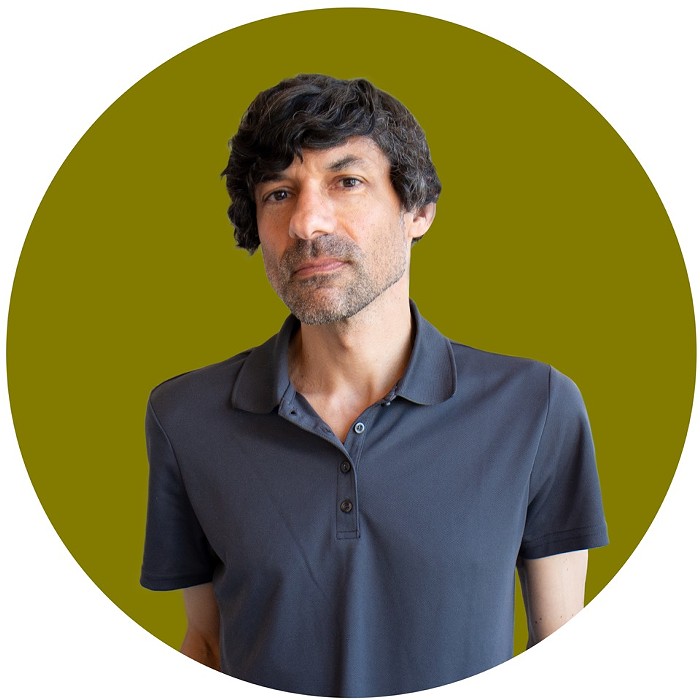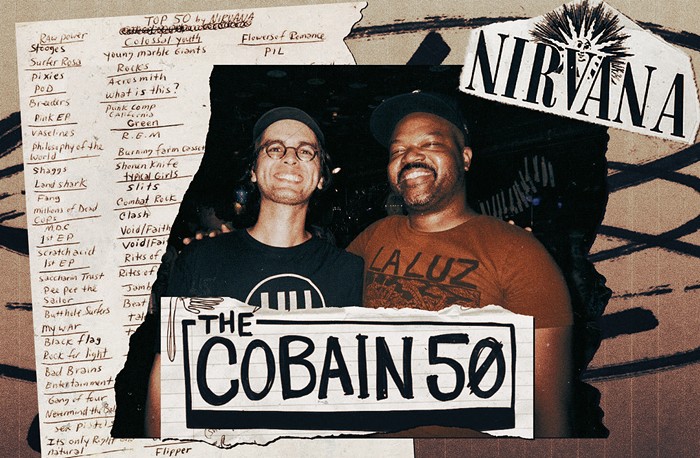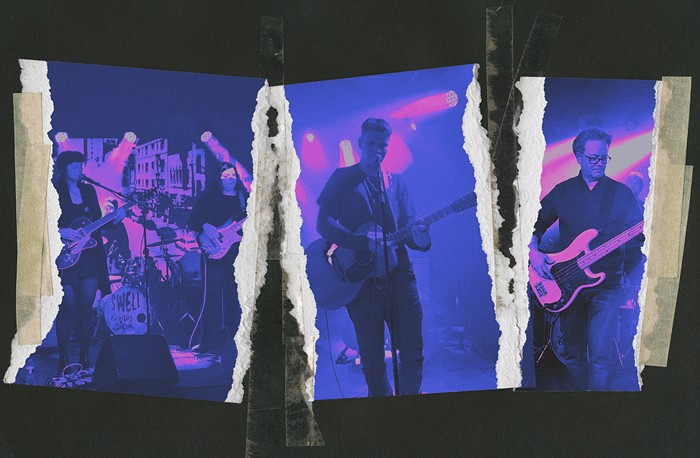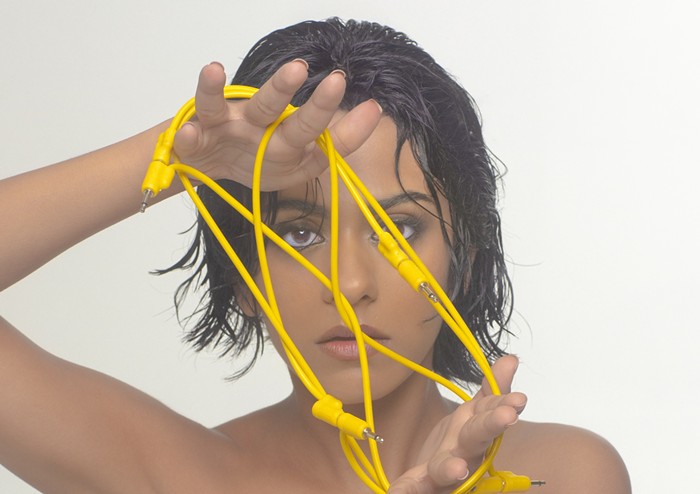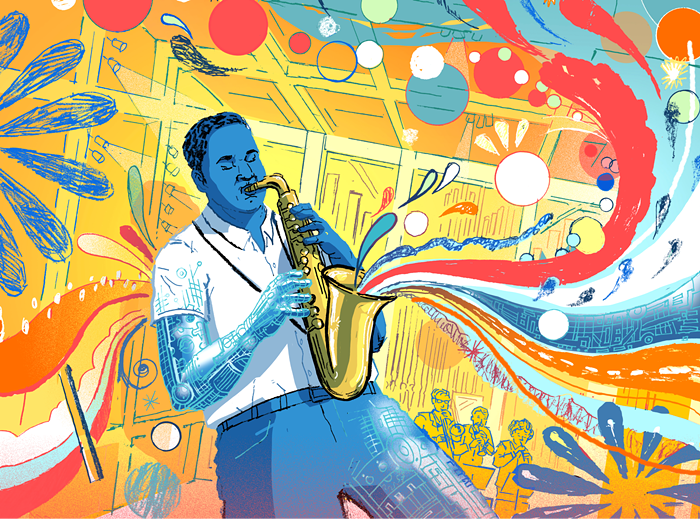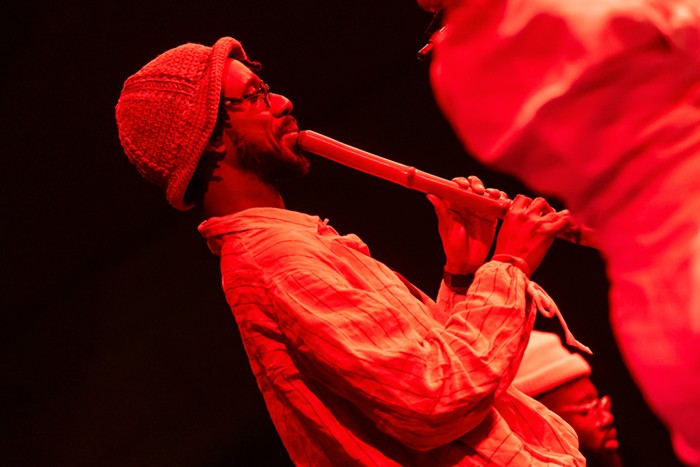Named after the woman who helped hundreds of African American slaves escape from servitude in the 1850s, New York City trio Harriet Tubman embody in their music that heroic activist's irrepressible quest for freedom. Brandon Ross (guitar/banjo/vocal), Melvin Gibbs (electric bass), and J.T. Lewis (drums) have been jamming complexly and powerfully for the last 22 years, imbuing their technically brilliant pieces with a fiery soulfulness.
Harriet Tubman are masters of improvised fusion, as they proved in a 2018 show at Langston Hughes Performing Arts Institute, where they dazzled attendees with telepathic interplay, rhythmic sorcery, and a turbulent vibe that recalled Jimi Hendrix's strafing acid rock and the torrid jazz-funk of 1970s-era Miles Davis.
When you peruse these musicians' résumés, you encounter a mind-boggling diversity of major artists with whom they've worked, which signifies how adaptable and skillful Harriet Tubman are. For example, they've played with many of avant-jazz's elite, including Sonny Sharrock, Henry Threadgill, Tony Williams, Herbie Hancock, and Ronald Shannon Jackson, but also with R&B/soul stars such as Aretha Franklin, Tina Turner, and Dionne Warwick. Hip-hop acts like Arrested Development and dead prez have tapped into Harriet Tubman members' sophisticated funk maneuvers while rockers such as Lou Reed, Arto Lindsay, and Sting have benefitted from Ross, Lewis, and Gibbs's instrumental prowess. In addition, Gibbs played bass in Rollins Band and Lewis drummed in Living Colour, high-profile gigs that don't seem to have swayed these guys to seek the accessible route in the music industry. No, they'd much rather record an album like Ascension (2011) that extrapolates jazz legend John Coltrane's own adventurous opus of the same title.
Fusion has accrued a negative reputation over the decades—usually with people who have not heard much of the genre's best specimens. But bands such as Harriet Tubman exist to pulverize conventional (non)wisdom about its alleged arid, masturbatory qualities. Ross, Gibbs, and Lewis are blessed with instincts that enable them to eschew bullshit filler in even their longest improvisations.
An early example of that can be heard in the 10-minute "Savannah" from Harriet Tubman's 1998 debut full-length, I Am a Man. It begins with Ross's delicate guitar watercolors (shades of Bill Frisell) before Lewis and Gibbs come in with a methodically chugging rhythm portending some momentous act of stealth. Then Ross peels off beautifully anguished squeals somewhere between Sonny Sharrock and Adrian Belew. All the while, the rhythm section is rumbling with a stoic, Tortoise-like attack. The transition from tranquility to turmoil is very subtle and powerful.
"The Green Book Blues" off 2018's The Terror End of Beauty leverages an exquisite tension between Gibbs's deep, dubby bass foundation and Ross's arcing guitar sighs while Lewis maintains a quasi-funk undertow à la Jack DeJohnette circa On the Corner. The song title refers to the Green Book, a guidebook that helped African Americans find safe places to lodge and eat and frequent other businesses sympathetic to black folks. Thus, they further honor the original Harriet Tubman's legacy.
It's commendable for Jazz Alley—whose schedule is largely filled with much older and more accessible bookings—to devote two nights to Harriet Tubman, an uncompromising unit who are at the peak of their considerable powers.

